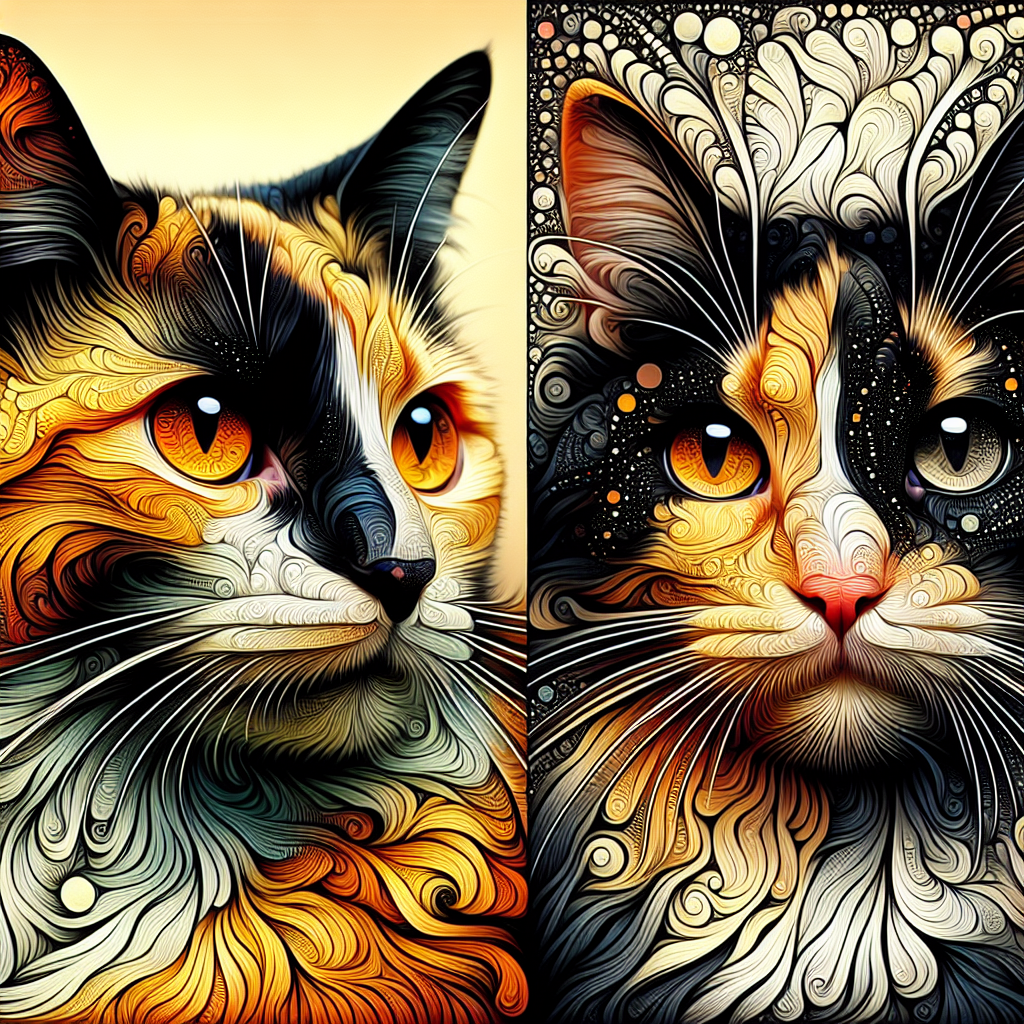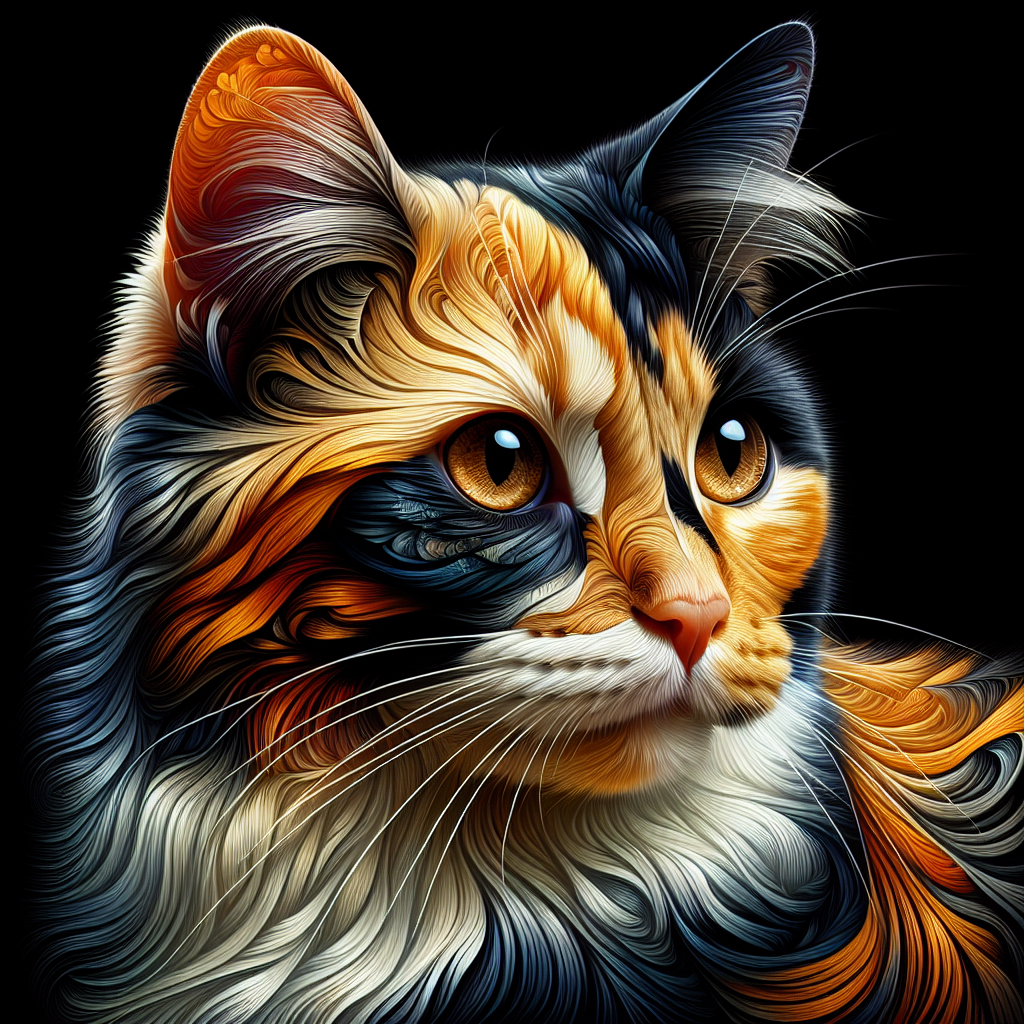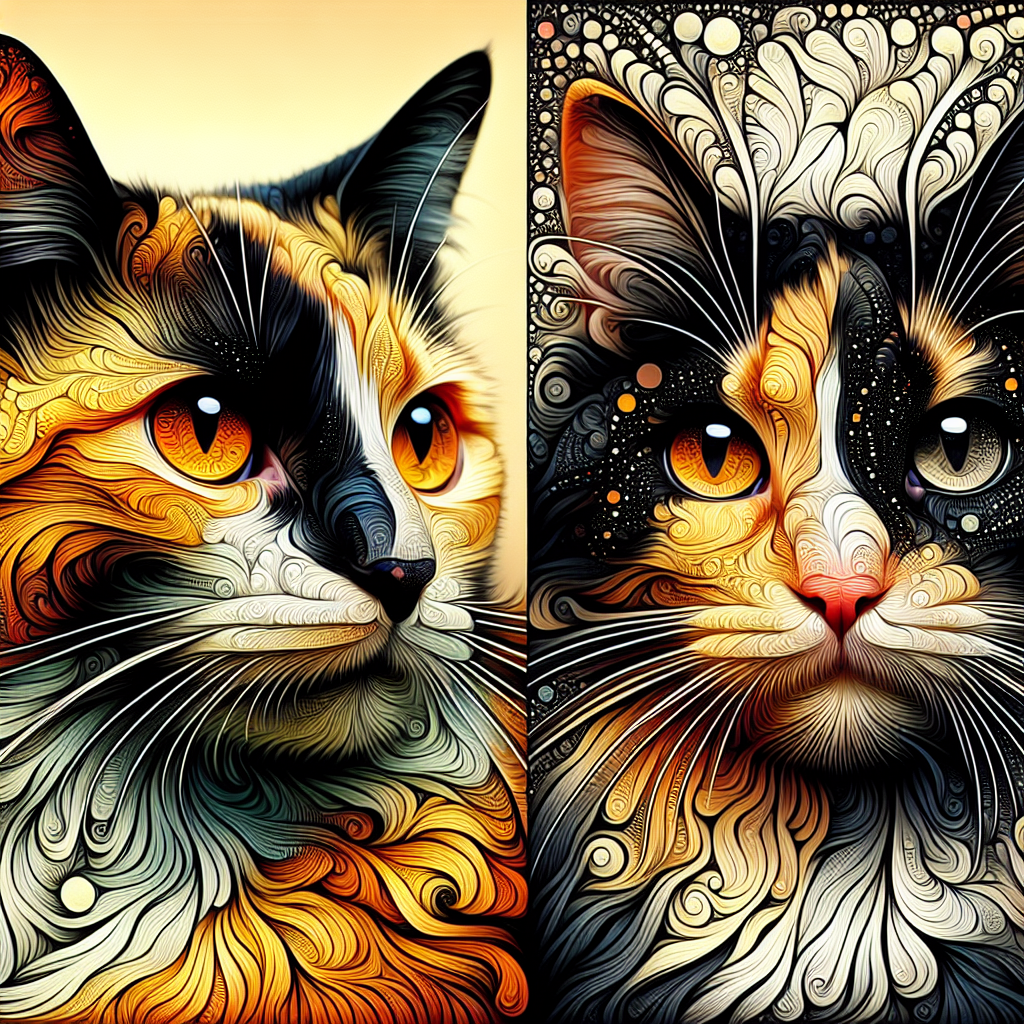Did you know that calico cats have a unique genetic makeup that sets them apart from other feline companions? These charming creatures are often characterized by their striking patches of orange, black, and white fur. However, have you ever wondered if calico cats also have a connection to the delightful orange tabby cats? In this article, we will explore the fascinating question of whether calico cats are indeed part orange tabby, uncovering the mysteries behind their captivating appearance. Get ready to discover the intriguing secrets of calico cats and their possible link to the vibrant orange tabbies!
What are Calico Cats?
Definition of Calico Cats
Calico cats are a specific type of domestic cat known for their unique and striking coat coloration. These cats exhibit a tri-color pattern consisting of patches of white, black, and orange fur. The word “calico” comes from the term “calico cloth,” which refers to a type of fabric with a similar colorful pattern. Calico cats are admired for their distinct beauty and are often seen as lucky or special.
Color Patterns of Calico Cats
The color patterns of calico cats can vary greatly, as each individual cat has a unique combination of colors and patterns on their fur. However, the most common color patterns in calico cats include large patches of white, along with smaller patches of black and orange. It is also possible to find calico cats with dilute colors, such as gray instead of black, or cream instead of orange. The distribution and arrangement of these colors can create various designs, including patched, mottled, or even tortoiseshell-like patterns.
What are Orange Tabbies?
Definition of Orange Tabbies
Orange tabbies, also known as red or ginger cats, are a specific color variation of domestic cats. These cats have a coat color that ranges from a deep reddish-orange to a pale yellowish-orange. Orange tabbies are beloved for their warm and vibrant hues, which often capture the hearts of cat lovers. They are a popular choice for pet owners due to their friendly and affectionate nature.
Characteristics of Orange Tabbies
Besides their distinct coat color, orange tabbies are known for their unique personality traits. They are often described as friendly, playful, and outgoing. Orange tabbies are known to be social cats that enjoy interacting with their owners and other animals. Many orange tabbies also exhibit a high level of intelligence and are quick learners. These cats are often seen as the perfect companions due to their warm and affectionate nature.

Understanding Calico Cats
Color Genetics of Calico Cats
The unique coat coloration of calico cats can be attributed to the complex genetics involved. Calico cats are typically female, and their color patterns are a result of inheritable traits passed down from their parents. The genes responsible for calico coat patterns are carried on the X chromosome. Since female cats inherit two X chromosomes, they can potentially inherit different combinations of genes that lead to different coat colors.
The Role of Orange Tabby in Calico Cats
The presence of an orange tabby parent greatly influences the coloration of calico cats. It is believed that the orange coloration in calico cats is derived from the orange tabby gene. When combined with other genes responsible for coat colors, calico cats can display a wide range of patterns and variations. The mixing and interaction of these genes contribute to the stunning and diverse appearance of calico cats.
Genetic Factors
Genes Responsible for Coat Color in Cats
The coat color of cats is determined by the interaction of various genes. More specifically, the Agouti gene determines the distribution of black and yellow pigments in the fur, while the Solid gene regulates the intensity and depth of these pigments. Additionally, the Dilute gene affects the overall color saturation. The combination and expression of these genes result in the various coat colors observed in different cat breeds.
X Chromosome and Coat Color
The X chromosome plays a crucial role in determining the coat color of cats. Since male cats have only one X chromosome, they inherit a single copy of each gene. As a result, the coat color in male cats is often a straightforward expression of the genes they carry. On the other hand, female cats have two X chromosomes, allowing for more complex patterns and combinations of coat colors. This is why calico cats, which are typically female, exhibit such intricate and diverse coat patterns.

Calico Cats vs. Tortoiseshell Cats
Differences in Color Patterns
While calico cats and tortoiseshell cats share some similarities in their coat coloration, there are distinct differences between the two. Calico cats have a tri-color pattern consisting of white, black, and orange patches, whereas tortoiseshell cats have a mosaic-like pattern of black and orange, without any white patches. Additionally, calico cats tend to have larger and more defined patches of color, while tortoiseshell cats have a more blended and marbled appearance.
Presence of Orange in Calico and Tortoiseshell Cats
Both calico and tortoiseshell cats can display orange fur, but the presence of orange is more prominent in calico cats. This is often due to the influence of the orange tabby gene, which is responsible for the vibrant orange coloration. While tortoiseshell cats may have patches or streaks of orange, the overall pattern is predominantly black and orange.
Famous Calico Cats
Notable Calico Cats
Throughout history, there have been several famous calico cats that have captured the hearts of people around the world. One of the most well-known calico cats is Marzipan, the beloved pet of famous artist Pablo Picasso. Marzipan often appeared in Picasso’s artworks and became an icon of inspiration and creativity. Another notable calico cat is Tama, who served as a stationmaster at a train station in Japan, bringing joy and good fortune to commuters. These famous calico cats have not only brought attention to their unique coat coloration but have also left a lasting impression on the world.
Mixed Breed Calico Cats
Influence of Parent Breeds
When calico cats are of mixed breed, their coat coloration can be influenced by the traits inherited from their parent breeds. While it may be challenging to pinpoint the exact influence of each breed, certain breeds are more likely to produce calico cats with specific coat patterns. For example, if a calico cat has Siamese ancestry, they may exhibit pointed patterns or colorpoint variations within their coat. The combination of different breeds adds an extra element of surprise and individuality to mixed breed calico cats.
Orange Tabby and Mixed Breed Calico Cats
The role of an orange tabby parent in mixed breed calico cats is similar to that of purebred calico cats. The presence of the orange tabby gene can strongly influence the coat coloration, leading to vibrant orange patches and unique patterns. Even in mixed breed calico cats, the orange tabby gene contributes to the striking and remarkable appearance that calico cats are known for.
Health Considerations for Calico Cats
Predisposition to Certain Health Issues
While calico cats are not inherently more prone to health issues compared to other cats, there are certain conditions that they may be predisposed to. One such condition is Feline Lower Urinary Tract Disease (FLUTD), which affects the urinary system and can cause discomfort and difficulty in urination. Additionally, calico cats, specifically those with more white patches on their fur, may have a higher risk of developing deafness due to a gene linked to both coat color and hearing ability. It is important for calico cat owners to be aware of these potential health considerations and provide appropriate care and monitoring.
Myths and Misconceptions
Myth: All Calico Cats are Female
Contrary to popular belief, not all calico cats are female, although the majority of them are. The unique genetics responsible for calico coat patterns are linked to the X chromosome, which is why female calico cats are more common. Male calico cats do exist but are extremely rare, as they require a rare genetic anomaly, such as having an extra X chromosome (XXY), to inherit the calico coat pattern.
Myth: Calico Cats Bring Good Luck
Another common myth surrounding calico cats is that they bring good luck. While calico cats are indeed considered symbols of good fortune in certain cultures, superstitions and beliefs vary across different regions. The idea of calico cats bringing good luck is often associated with their striking appearance and rarity. Nonetheless, whether or not a calico cat brings good luck, they undeniably bring joy, companionship, and beauty to the lives of their owners.
Conclusion
The Connection Between Calico Cats and Orange Tabbies
In conclusion, calico cats are truly unique and captivating creatures with their tri-color coat patterns and distinct personalities. The presence of an orange tabby gene plays a significant role in the coloration of calico cats, adding vibrant patches of orange to their coats. Through the intricate genetics and interaction of various genes on the X chromosome, calico cats exhibit a beautiful and diverse range of patterns and colors. Whether male or female, calico cats continue to fascinate and charm cat lovers around the world, showcasing the profound beauty that nature can create.

